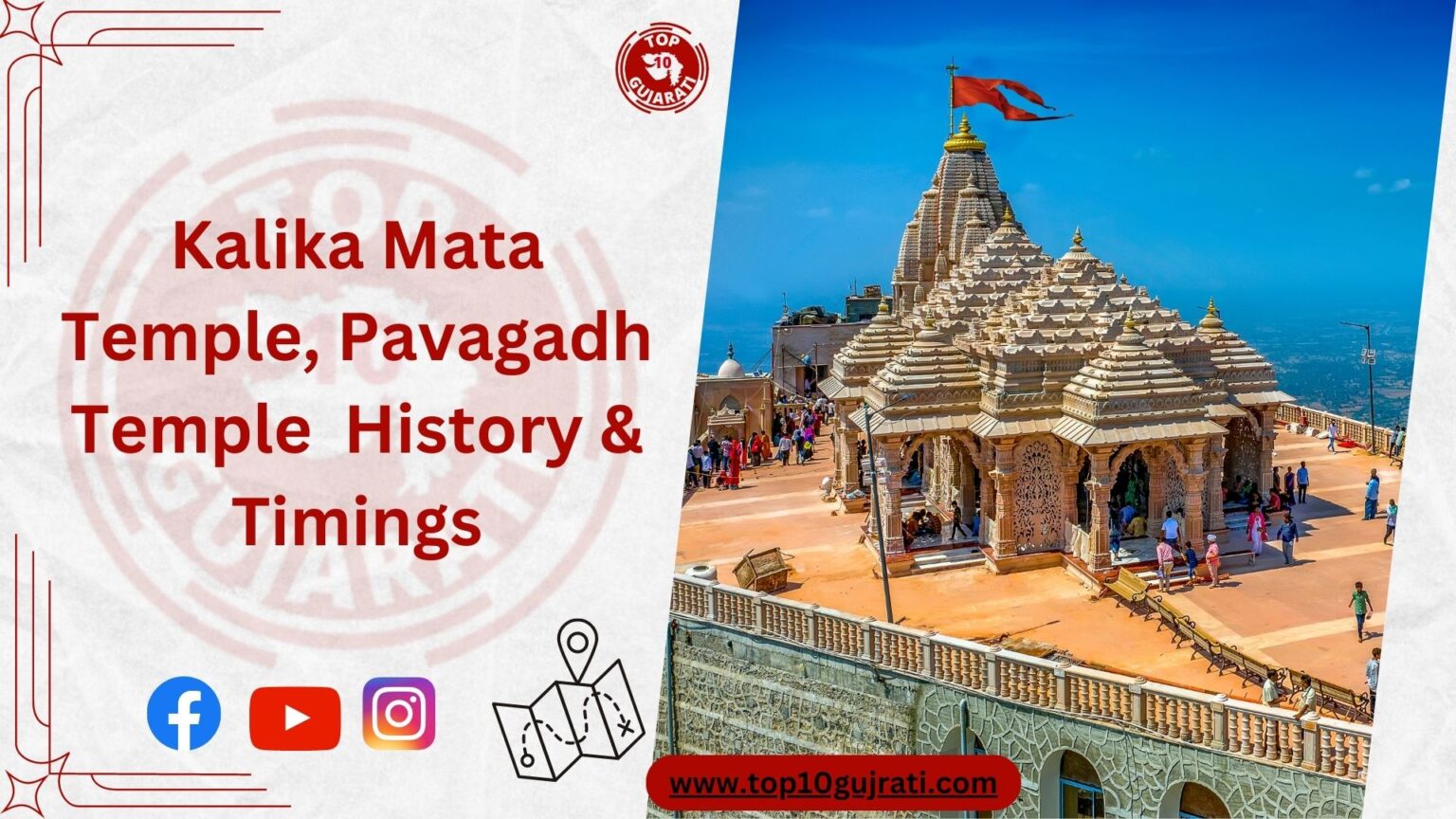The history of the Pavagadh Temple, also known as the Kalika Mata Temple, is deeply rooted in Hindu mythology and has a rich historical significance. The temple is situated on the Pavagadh Hill in the Champaner-Pavagadh Archaeological Park in Gujarat, India.
According to Hindu mythology, it is believed that the foot of the goddess Sati (an incarnation of the goddess Parvati) fell at this location during the great cosmic dance of Lord Shiva known as the Tandava. The temple is dedicated to the goddess Kali, who is considered an embodiment of divine feminine power and the destroyer of evil forces.
The historical records indicate that the Pavagadh Hill and the surrounding region have been a site of religious significance for many centuries. The hill served as a fortification during various periods of history, and the temples on its summit were built and renovated by different rulers.
During the Solanki dynasty’s reign in the 11th century, the temple saw significant renovations and additions. In the 15th century, Sultan Mahmud Begada of the Gujarat Sultanate conquered the region and made attempts to convert the temple into a mosque. However, the temple remained intact, and subsequent rulers made additional contributions to its architecture.
The architecture of the Pavagadh Temple is a blend of Hindu and Islamic styles. The temple complex consists of several smaller shrines dedicated to different deities, along with the main shrine of Kali. The temple’s intricate carvings, sculptures, and architectural elements reflect the artistic and cultural influences of the time.
Today, the Pavagadh Temple is a popular pilgrimage site, attracting devotees from all over India. It holds particular significance during the Navratri festival, a nine-night celebration dedicated to the goddess Durga and her various forms, including Kali. Pilgrims climb the steps or take the cable car to reach the summit of Pavagadh Hill, where they seek blessings and offer prayers to the goddess.
The Pavagadh Temple stands as a testament to the enduring spiritual and historical legacy of the region. It continues to be a symbol of devotion and a site where people come to connect with the divine.
[metaslider id=”1704″]
There are several notable attractions and places to visit near the Pavagadh Temple in Gujarat, India. Here are a few suggestions:
1. Champaner-Pavagadh Archaeological Park: The Champaner-Pavagadh Archaeological Park is a UNESCO World Heritage Site that encompasses the ancient city of Champaner and the Pavagadh Hill. The park is known for its rich historical and architectural heritage, including mosques, palaces, fortifications, and other structures from the 8th to 14th centuries.
2. Machi Haveli: Located near the Pavagadh Temple, Machi Haveli is an ancient structure that served as a royal mansion during the rule of the Solanki dynasty. It showcases remarkable architecture and offers a glimpse into the region’s history.
3. Kevada Mosque: Situated within the Champaner-Pavagadh Archaeological Park, the Kevada Mosque is an impressive Islamic structure known for its intricate carvings and architectural beauty. It is one of the notable mosques in the park and is worth exploring.
4. Jami Masjid: Another significant mosque within the Champaner-Pavagadh Archaeological Park is the Jami Masjid. It is renowned for its grandeur and detailed craftsmanship, representing a blend of Hindu and Islamic architectural styles.
5. Sadanshah Pir Dargah: Located near the foothills of Pavagadh, Sadanshah Pir Dargah is a revered Sufi shrine. It is a place of spiritual significance, attracting devotees from different faiths who seek blessings and peace.
6. Shri Mahakalika Temple, Pavagadh: In addition to the Kalika Mata Temple, there is another important temple dedicated to the goddess Mahakali near the Pavagadh Temple. It is a popular pilgrimage site and holds religious importance for devotees.
7. Hathni Waterfall: For nature lovers and adventure enthusiasts, a visit to Hathni Waterfall can be a refreshing experience. It is a picturesque waterfall located near the Pavagadh region, surrounded by lush greenery and offering a serene atmosphere.
Pavagadh is well-connected and can be reached by various modes of transportation. Here are the common ways to reach Pavagadh:
By Air:
The nearest airport to Pavagadh is Vadodara Airport (also known as Civil Airport Harni), located approximately 45 kilometers away. From the airport, you can hire a taxi or take a bus to reach Pavagadh.
By Train:
The nearest railway station to Pavagadh is Champaner Road Railway Station, which is located about 4 kilometers away. However, this station has limited connectivity. The more convenient option is to reach Vadodara Junction Railway Station, which is well-connected to major cities in India. From Vadodara Junction, you can hire a taxi or take a bus to reach Pavagadh.
By Road:
Pavagadh is well-connected by road, and several buses operate from nearby cities and towns to Pavagadh. You can also drive to Pavagadh by private vehicle or hire a taxi from nearby cities like Vadodara, Ahmedabad, or Surat. The distance and travel time may vary depending on your starting point.
[metaslider id=1712]
Once you reach the base of Pavagadh Hill, you have two options to reach the Kalika Mata Temple at the summit:
1. Ropeway: The Pavagadh Temple ropeway, also known as the Udan Khatola, is a popular option for reaching the temple. The ropeway operates from a base station near the Manchi village. You can purchase a ticket and enjoy a scenic ride to the hilltop.
2. Trekking/Steps: If you prefer a more adventurous approach, you can choose to climb the steps that lead to the Kalika Mata Temple. The steps are well-marked and offer beautiful views along the way. This option requires physical fitness and may take around an hour or more, depending on your pace.



